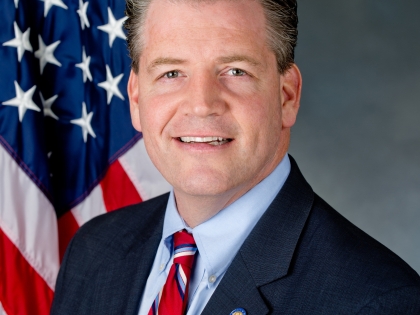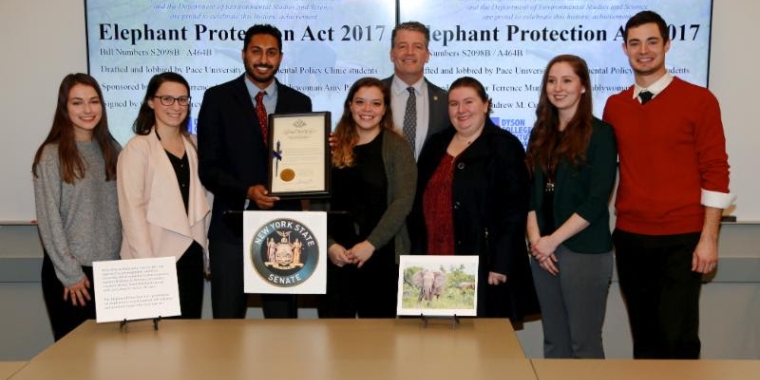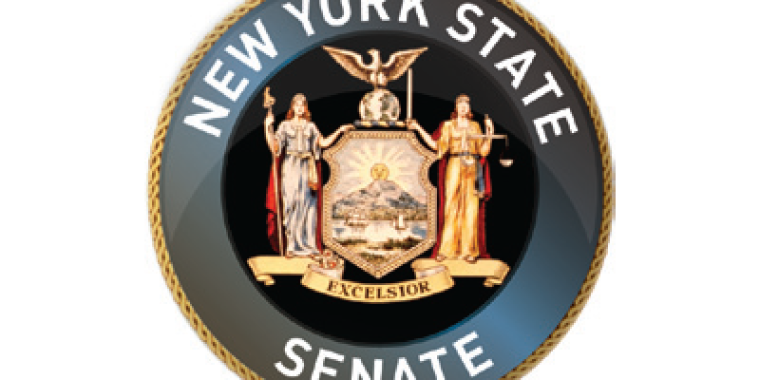
NYS Task Force to Develop Comprehensive Plan to Combat Heroin and Opioid Addiction and Deliver Report to Governor in June
May 26, 2016
STATEN ISLAND, NY - Senator Terrence Murphy and Governor Andrew M. Cuomo today hosted a Heroin Task Force public listening session on Staten Island, where nearly 200 elected officials, health experts, community members and families impacted by addiction convened to discuss strategies and solutions to combat the opioid epidemic in New York State. Members of the Task Force received testimony on recommended changes to law, as well as new policies and best practices regarding heroin and opioid addiction prevention, treatment and recovery. Community input received at listening sessions will be included in the Task Force’s final report. The Task Force will complete its review and deliver final recommendations to the Governor in June.
"The state is taking aggressive action to tackle the opioid epidemic and keep New Yorkers safe," Governor Cuomo said. "Heroin and prescription opioids are equal-opportunity killers that don’t discriminate based on race, class or gender – and the number of deaths statewide are staggering. By traveling to affected communities and hearing directly from New Yorkers, we can find smart solutions to combat this public health crisis and increase access to prevention, treatment and recovery services across the state."
Senator Terrance Murphy said, “As the heroin epidemic continues to spread across the state at an alarming rate, it’s critical that we do everything in our power to take transformative action and end this epidemic. I have traveled the state and have helped shine a light on this crisis, and I applaud Governor Cuomo for creating the New York State Heroine Task Force and Lt. Governor Hochul for her work with advocates statewide. I will continue to support their commitment to mitigating this crisis, protecting communities and saving lives.”
Governor Cuomo launched the New York State Heroin Task Force on May 10, bringing together a diverse coalition of experts in healthcare, drug policy, advocacy, education, and parents and New Yorkers in recovery. Today’s event marked the fifth Task Force meeting. In addition to NYS Task Force members, the panel included Borough President James Oddo, State Senator Andrew Lanza, Assembly Member Michael Cusick, Assembly Member Linda Rosenthal, President of the Legal Action Center Paul Samuels and CEO of Acacia Network Pamela Mattell. Last week, listening events were held in the Capital District, Central and Western New York. More Task Force listening sessions will be held across the state in the coming days.
“We’ve taken bold action to tackle this crisis head on, however, during the last week, we’ve heard we have to be ruthless,” Lieutenant Governor Kathy Hochul, Co-Chair of the Heroin Task Force said. “Our attack on this epidemic has to be consistent and unrelenting. I thank all the New Yorkers who have come out to share their expertise and experiences with the Task Force, and I encourage those who have a point of view to share to attend an upcoming session or to share their input on combatheroin.ny.gov. Every voice needs to be heard on this topic, so that our response can be comprehensive.”
Over the past decade, admissions for heroin and prescription opioid-abuse treatment in New York have increased 40 percent. In Upstate New York and on Long Island, admissions for opioid and heroin addiction have increased 94 and 117 percent respectively. Moreover, prescription opioid admissions to OASAS treatment programs have risen statewide 113 percent between 2006 and 2015. Heroin admissions to OASAS addiction treatment programs have risen 35 percent between that same time period.
In March, new regulations took effect that require all prescriptions to be transmitted electronically from the prescriber directly to the pharmacy. The measure is part of New York’s comprehensive I-STOP law, first implemented in 2012, designed to curb prescription drug abuse across the state. In April, the state began sharing Prescription Monitoring Program data with New Jersey to further prevent the stockpiling and resale of dangerous controlled substances. Last month alone, from April 14 to April 22, over 16,000 requests for controlled substances were made across state lines.
To address opioid overdose, now the leading cause of accidental death in New York, the state has led an aggressive effort to make naloxone available without a prescription at approved pharmacies. In March, the state DOH issued standing medical orders to the more than 750 independent pharmacies outside New York City, allowing these pharmacists to dispense naloxone without a prescription. The action built on the Governor’s agreement with CVS and Walgreens/Duane Reade in January 2016, enabling more than 900 of these pharmacies to make naloxone available without a prescription statewide.
Since 2006, the state’s community overdose prevention and naloxone distribution program has enrolled more than 225 registered programs, which have trained more than 112,000 individuals. As a result, more than 3,500 overdose reversals have been documented, with more than 1,500 lives saved in 2015 alone. A total of 8,424 law enforcement officials have been trained to administer naloxone through these efforts, including 2,639 instructors.
The Heroin Task Force will build upon the state’s previous efforts and develop a comprehensive statewide plan to break the cycle of opioid addiction in New York. The Task Force will identify ways to expand awareness of heroin and opioid addiction; enhance statewide prevention efforts; increase access to treatment; and improve support for those in recovery. For more information, please visit: http://combatheroin.ny.gov/. Members of the Task Force can be found here. The meeting schedule will be posted on http://www.ny.gov/HeroinTaskForce. To provide input, e-mail: herointaskforce@exec.ny.gov.
NYS OASAS Commissioner Arlene González-Sánchez said, “I want to thank Governor Cuomo and Lieutenant Governor Hochul for their dedication and commitment to addressing addiction in New York State. With their leadership and the input of the Governor’s Heroin Task Force, we’ll be able to help more New Yorkers who are battling addiction. We will work to ensure that all New Yorkers can access addiction treatment and have ongoing supports throughout their recovery from the disease of addiction.”
NY State Health Commissioner Dr. Howard Zucker said, "Governor Cuomo and Lieutenant Governor Hochul understand the importance of partnering with community leaders in the fight against drug abuse. Our partners – including parents, healthcare providers and advocates – are providing the Task Force with invaluable information from their personal experiences that will help us fight the epidemic of heroin and opioid abuse."
New Yorkers struggling with an addiction, or whose loved ones are struggling, can find help and hope by calling the state’s HOPEline at 1-877-8-HOPENY (1-877-846-7369) or by texting HOPENY (Short Code 467369). New Yorkers can find an OASAS-certified substance use disorder treatment provider any time by using the OASAS Treatment Availability Dashboard. For help with accessing care and insurance coverage, visit the Access Treatment page on the OASAS website.
To find a naloxone overdose reversal medication training near you, visit the OASAS Addiction Treatment Center opioid overdose prevention trainings page. Visit www.combatheroin.ny.gov for more information on addressing heroin and prescription opioid abuse, including a Kitchen Table Tool Kit to help start the conversation about the warning signs of addiction and where to get help. For additional tools to use in talking to a young person about preventing underage drinking or drug use, visit the State’s Talk2Prevent website.
Share this Article or Press Release
Newsroom
Go to Newsroom
Senator Murphy honors Peekskill honor student
December 15, 2017


Senator Murphy comments on Child Victims Act
December 14, 2017
